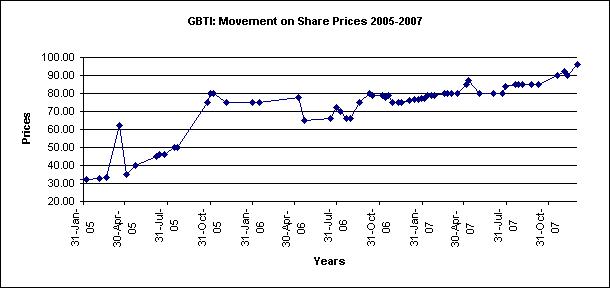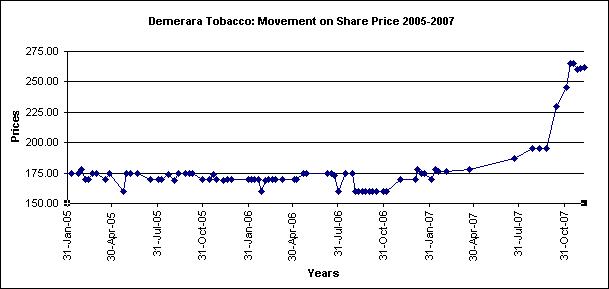The second oldest profession
Shareholders may not quite realise it but they not only appoint (and can remove) the auditors but the auditors are by law, required to report to them. That is the theory. The practice is that management deals directly with the auditors, fixes their remuneration, challenges them on key concerns they raise and most significantly can recommend their removal. The audit report – even to those who may have some understanding of its nature – has become so lengthy, boring and obscurely complex that it is likely that even the company secretary who reads it at the Annual General Meeting (AGM) does not quite understand what it really says. Richard Bennison, head of audit of KPMG UK in the prestigious monthly publication Accountancy of May 2008 was perhaps only a tad too cynical when he said that “The message of an audit report is, in the vernacular: These accounts are about right unless management have deliberately conspired to falsify them.”
A standard, clean audit opinion issued by the profession can run up to 500 words, about five times more than is required by the Companies Act 1991. How and perhaps more importantly, why did the second oldest profession not known for its literary skills, develop such a love for words with the result that an eight-line report in 1983 became sixteen in 1993 and some 27 in 2007? Has length added anything to shareholders’ understanding of the report or merely shielded the auditors from lawsuits for shoddy auditing work done well out of the sight of the shareholders who appoint them, and whose only communication with the shareholders is their report which is attached to the financial statements circulated with or contained in the Annual Report of the company?
Monopoly
The audit profession has had an unshakeable but arguably necessary monopoly on all companies operating under the Companies Act 1991 as successive Ministers of Finance have failed to trigger the section in the Act which would have dispensed with the need for an auditor. The smallest company then is required to meet the same stringent accounting and disclosure requirements as say, a Banks DIH. Auditors are also helped in another respect by the Companies Act 1991, which simply requires the auditors to state whether in their opinion, the balance sheet and the profit and loss account show a true and fair view. In the repealed Companies Act Cap 89:01 auditors were required to state, perhaps impossibly, whether the accounts showed “a true and correct view…”
Readers of financial statements also need to recognise that while the audit profession will not say it, “true and fair” is a largely undefined term and that within case law and auditing literature there may be more than one “true and fair” view of the state of affairs and results of a business. Add this to the prolixity of the report and we find a complete absence of a key ingredient prescribed by the Financial Reporting Council (UK) for audit reporting: to provide a positive contribution to audit quality. The FRC suggests that for such a contribution to take place it would require audit reports to be written in a manner that conveys “clearly and unambiguously” the auditor’s opinion on the financial statements, and addresses the need of users of financial statements in the context of applicable law and regulations.
The first rule: cover your behind
That is eminently sensible, but is that what auditors really want or do they want to avoid lawsuits which can cripple them? The first thing an auditor seeks to do is minimise his risk including the risk of being sued. Accordingly auditors need to protect themselves and that protection comes at the expense of clarity, brevity and utility. In my decades of auditing experience with a number of international and local firms I cannot recall a single conversation among audit partners identifying communication with shareholders as even the last of their audit objectives.
But if companies legislation is so precise about the report of the auditors, how did we get here?
The first thing to note is that Guyana does not have its own accounting and auditing standards. As members of the International Federation of Accountants (IFAC) dominated by the big firms in the developed world, the local accounting regulator, the Institute of Chartered Accountants of Guyana, is committed to its members adopting and applying the standards set by IFAC. While nationalists (if they still exist) may consider this another form of colonialism, the fact is that international banks and multilateral lending agencies as well as investors, stock exchanges and domestic banks find comfort in financial statements that are prepared and audited to the highest standards of best practice, which are in effect the standards set by the major players.
The initial explosion in the verbosity of the audit opinion was a reaction to what was described as the expectation gap – auditors had to disabuse readers of any notion that the audit was somehow expected to detect frauds or that the auditors were responsible for the preparation and content of the financial statements. The report by the auditors rightly seeks to draw attention to the fact that the management is responsible for the financial statements and that the auditors’ duty is to report on those statements using such methods and techniques as would enable them to report in a most cost-effective (read profitable) manner.
Case brief
But the real reason for all the ‘wordiness’ is the fear of litigation, a fear that has dogged the accounting and auditing profession if not as far back as the South Sea Bubble (1720), certainly in cases like Kingston Cotton Mill (1896) which put the auditor as a watchdog not a bloodhound; Hedley Byrne v Heller (1963) which established the principle that when a person makes a statement in a professional capacity, he voluntary assumes responsibility to the person he makes it to unless he has put a disclaimer in his communication; BCCI (1991), referred to satirically as the ‘Bank of Crooks and Criminals International,’ one of the first cases in which the financing of international terrorism was an issue; and more recently, the 2003 Scottish case Royal Bank of Scotland v Bannerman Johnstone Maclay (‘Bannerman’), in which the court ruled that in preparing the audited accounts of their clients, APC Ltd, Bannerman may have owed RBS, one of APC’s creditor banks, a duty of care and therefore liable for any loss suffered as a consequence.
It was sufficient for RBS to show that Bannerman should have been aware that the accounts and audit report would be provided to RBS for the purpose for which RBS relied on them, even though they may have been prepared for a different statutory purpose. Crucial to the court’s reasoning was the absence of any third party disclaimer in the audit report – which has come to be known as the ‘Bannerman’ statement, used by auditors to discourage third parties from relying on the audit. It is widely believed that it was the presence of such a provision that protected Ernst & Young in a £350M case involving German truckmaker MAN and a subsidiary audited by Ernst & Young, which had been bought by MAN.
Not everyone is happy with such a disclaimer, and a suggestion by the Audit Practices Board of the UK to dispense with the Bannerman statement has met with consternation among UK audit firms. The leading accounting body in the UK, the Institute of Chartered Accountants in England and Wales, is convinced that the Bannerman statement remains a strong and integral part of the audit report, and that there is nothing wrong in principle with disclaiming any duty to third parties.
Tax evasion is not a crime?
In Guyana, some auditors give their blessing to accounts which have been accepted by financial houses and the Guyana Revenue Authority (GRA), but which even Alice would consider pure fantasy. During the last decade we saw some high profile receiverships in which businesses went under shortly after receiving clean reports from their auditors, causing massive losses to the banks. The GRA is too often the victim of some of the most spurious accounts imaginable and yet neither the banks nor the GRA has taken any action against any auditor.
Using history as their guide, auditors assume that the chances of their being sued by lenders for negligence in signing off on the financial statements of their clients are about as likely as snow in Guyana. Those auditors who also prepare the tax returns for their clients must know that those returns are relied upon by the tax authorities for the assessment of taxes and that under the Income Tax Act they can be held criminally liable for aiding and abetting in tax evasion.
Since in Guyana it does not appear that tax evasion is a crime then clearly aiding and abetting it cannot be a crime either! Instead of sanctioning those auditors and tax consultants whose product is so egregiously bad, the GRA routinely issues them with annual Tax Practice Certificates that are used as a licence to continue in their ways.
One of the new rights created by the Companies Act 1991 is the right of the shareholder to have the auditors answer at the AGM questions relating to their duties as auditors. So far it is the directors who have been answering those questions and it would be fascinating to witness such an encounter between shareholder and auditor! That little exercise in shareholder democracy may do more for governance than all the hundreds of words in the audit report.


